The Incredible Story of the Allosaurus Snout
The Incredible Story of the Allosaurus Snout
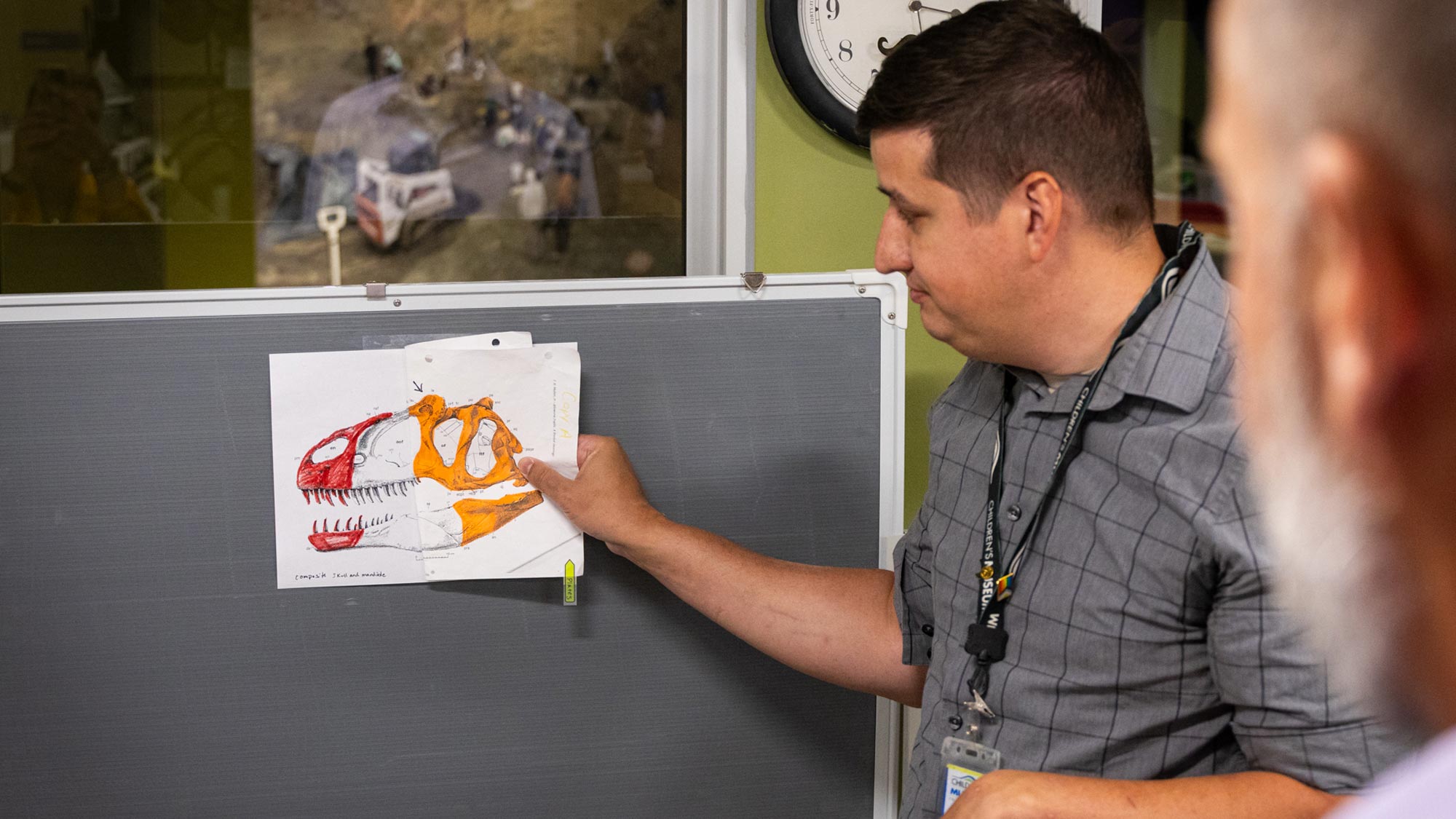
Earlier this year, we shared the thrilling news of our Allosaurus discovery at The Jurassic Mile® dig site in Wyoming. Now, our paleontologists have turned up the excitement level even more!
You’ve probably seen the Allosaurus legs on display outside the R.B. Annis Mission Jurassic Paleo Lab inside Dinosphere®. It’s a tangible reminder of the Mission Jurassic™ project. Every summer, our paleontologists make some incredible finds at the Jurassic Mile® in Wyoming. And they make incredible discoveries right here in our Paleo Labs.
And it’s been exciting to witness the slow unveiling of this fossil.
But things are just getting started.
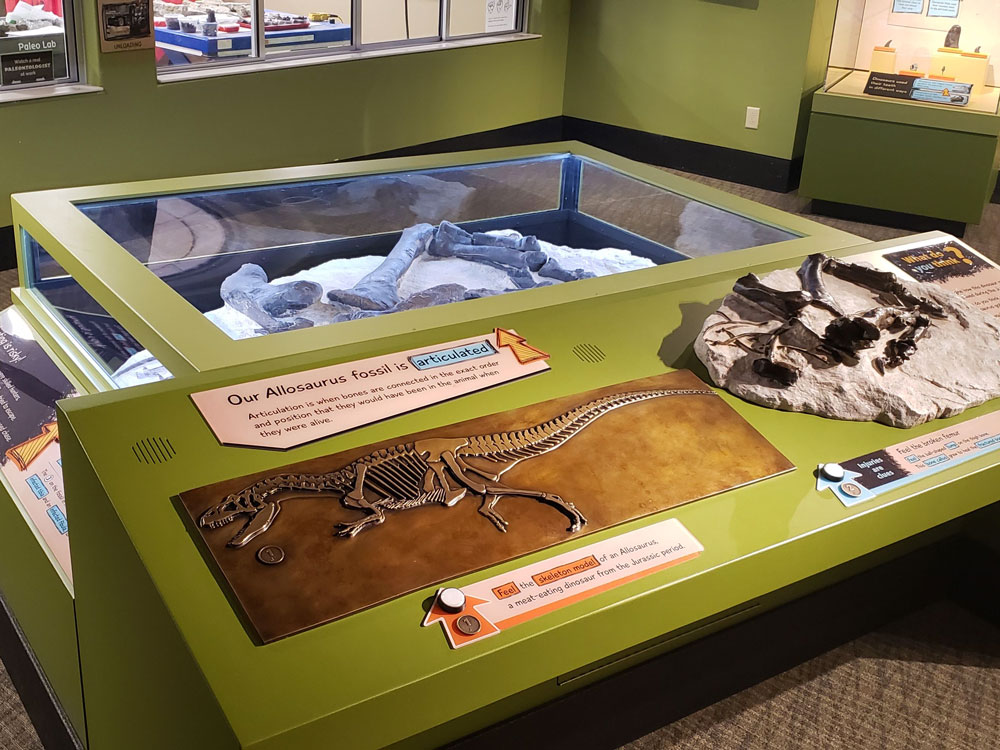
During the 2023 dig season, our dig team removed a block of rock from The Jurassic Mile® that they believed contained the neck and skull of our Allosaurus friend. They brought it back to Indianapolis and began to work on it in the Paleo Lab. As they worked, they found that they were partially correct. The block contains the specimen’s neck and the back of its skull. Our team returned to Wyoming this summer for one important mission—find the snout.
So they went to the area where they found the neck and skull block the previous summer and began clearing the area of dirt, rock, and debris. They eventually found the tip of a serrated tooth poking out of the rock. What kind of dinosaurs have serrated teeth? Carnivores—meat eaters. What type of food did Allosaurus eat? Meat.
This could be the spot!
The team planned to remove the potential fossil and the surrounding matrix in one big chunk. Once they brought it to Indianapolis, they could work on it in a controlled environment to find out if their theory was correct.
Sometimes the unexpected happens when you’re out in the field.
When they were using a skid steer front end loader to pry the block out of the ground, a crack began to form. Suddenly—crack—the rock split across the surface of the fossil. They could see a distinct row of jagged teeth poking out of the bottom of the rock. Surely this was the snout they were looking for! But without all of that surrounding rock to support it, the fossil was in danger of collapsing on itself. Just one wrong move could crush the snout.
The paleo team rushed to help. How could they safely remove the block without damaging the fossil? While they discussed options, team members picked up pieces of the fossil that had separated from the main block—they would piece them back together in the Lab. The team ultimately decided to flip the block off the front end loader. This was a much greater challenge than you might think. This chunk of rock and fossil was heavy. It required a lot of planning to move this fossil in a way that kept everyone safe.
A camera mounted in the front end loader captured the make-or-break moment for the Allosaurus snout.
"The release of emotions was something I’ve never felt. Everyone was screaming, I was crying and it was the most exciting thing I’ve ever witnessed—knowing that we found something in better condition than anyone dreamed of.”
—Lead Paleontology Curator Laura Rooney
Taking a closer look
After returning to Indianapolis, our paleontologists got to work on the Allosaurus snout and have already made some exciting finds! Take a look at this image. What do you see?
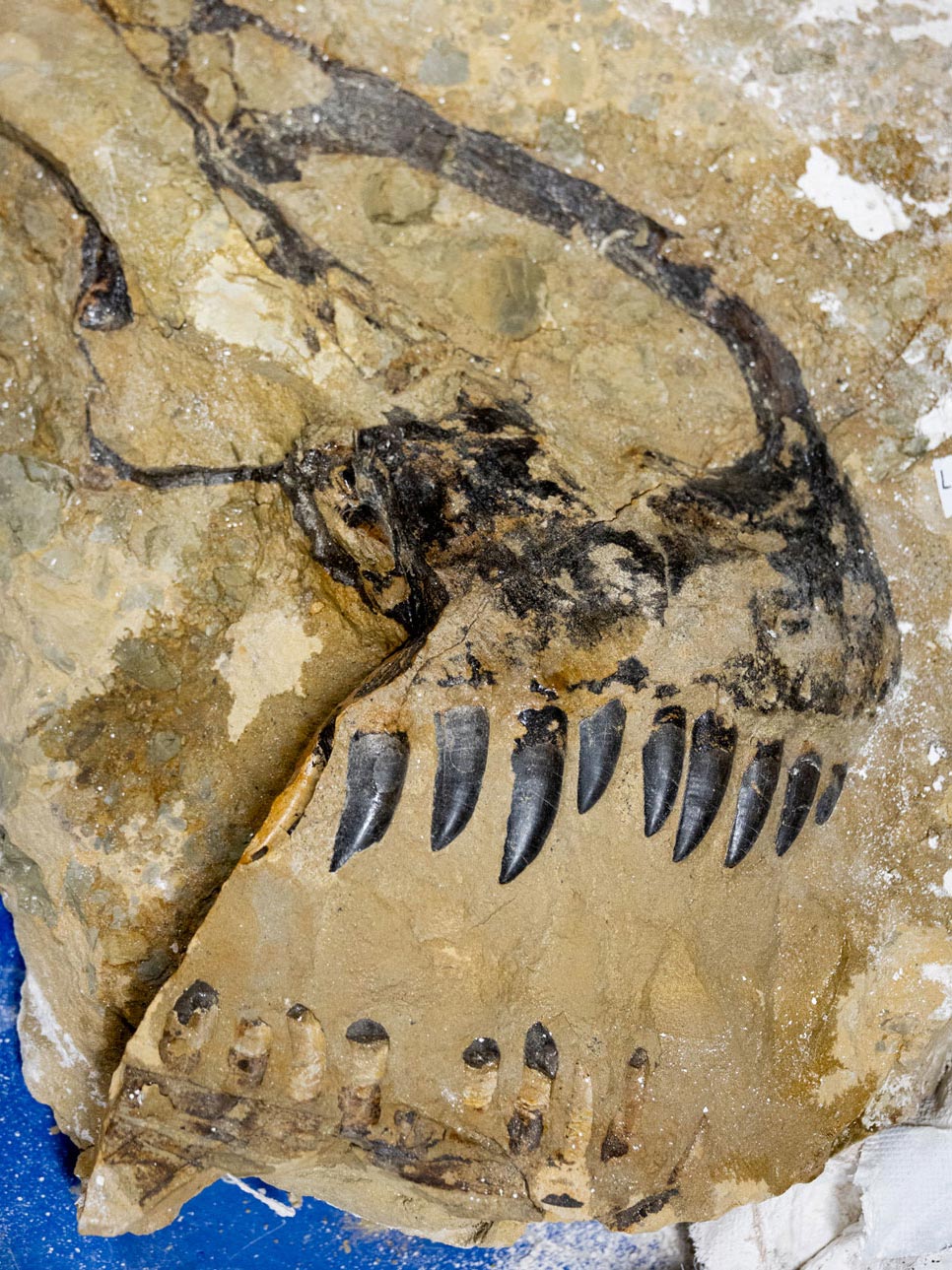
Rows of teeth.
A “nose.”
Sinuses.
We already knew this Allosaurus was a significant discovery. It’s highly articulated—when the skeleton was discovered, the bones were connected in the exact order and position that they would have been in when the animal was still alive.
It also has an unusual amount of skin impressions. Why do skin impressions matter? They help us know what dinosaurs looked like. And it appears that this Allosaurus discovery has skin impressions that haven’t been found on any other Allosaurus fossil to date.
When you add this snout to an already impressive specimen?
All you can say is “Wow!”
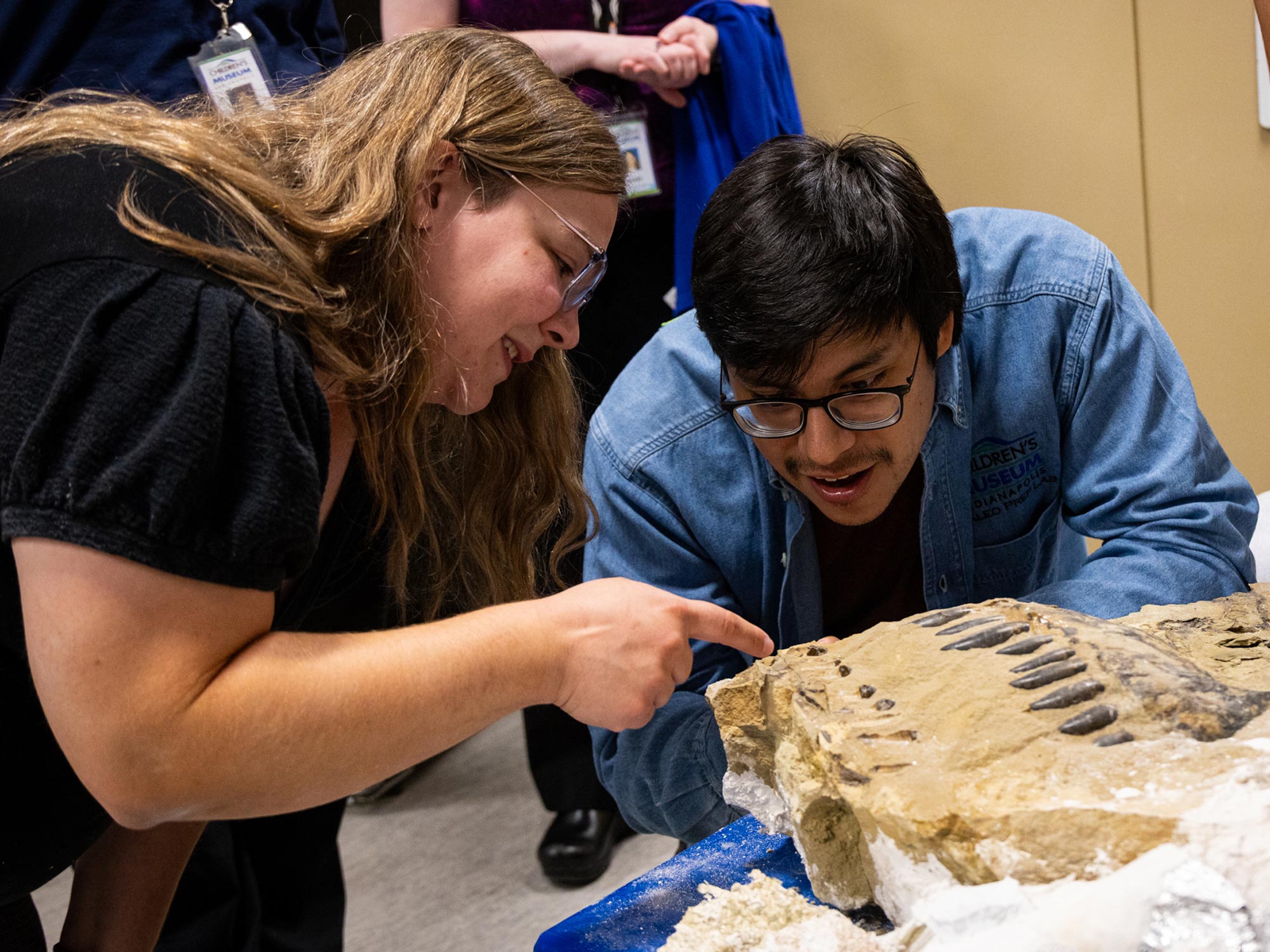
This is just the beginning, though. Our paleontologists will continue to prep and examine this Allosaurus skeleton. They believe there are many more scientifically significant discoveries in store for this fantastic beast. When you see them at The Children’s Museum, be sure to ask them about the new things they’ve discovered about our Allosaurus. They'd love to tell you!
Make your own Mission Jurassic™ dino discoveries
Did you know that you can dig for fossils alongside our paleo team at The Jurassic Mile® dig site? Unleash your family's curiosity and embark on a once-in-a-lifetime adventure with the Wyoming Dinosaur Dig! Search for clues. Dig for fossils. Document your findings. Be part of science in action.
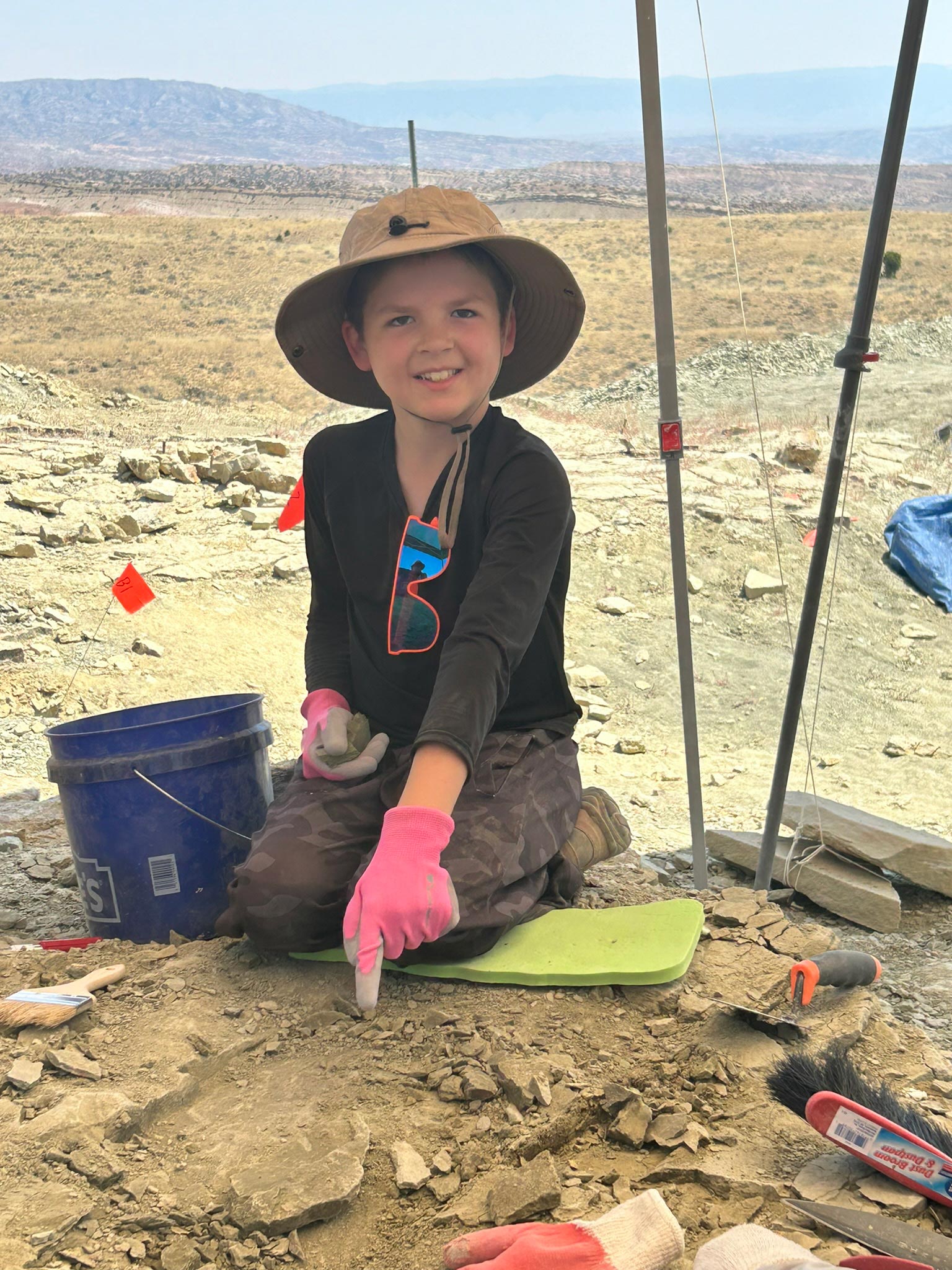
Fuel your adventurous spirit and make plans to participate in next year’s dig!









